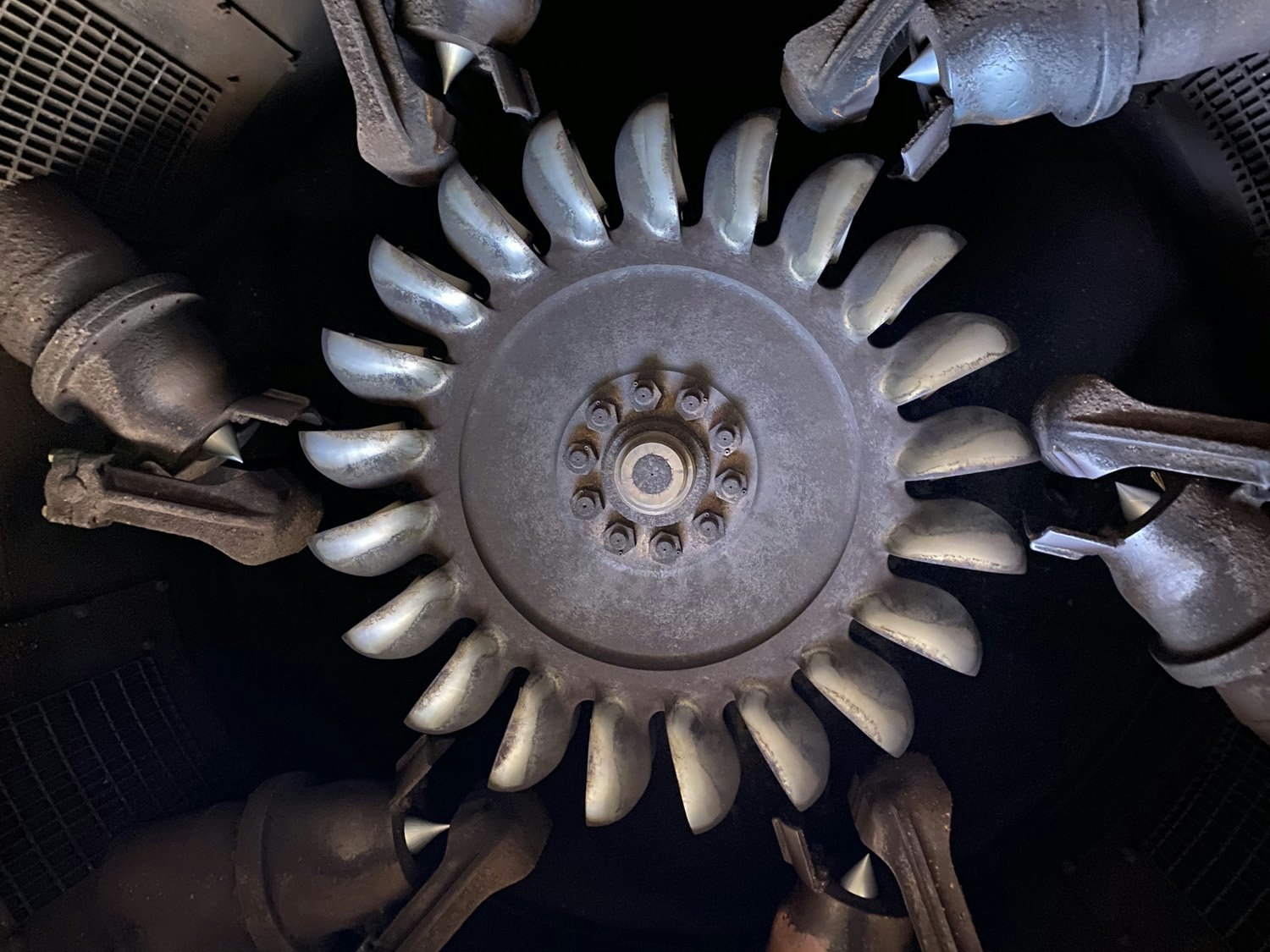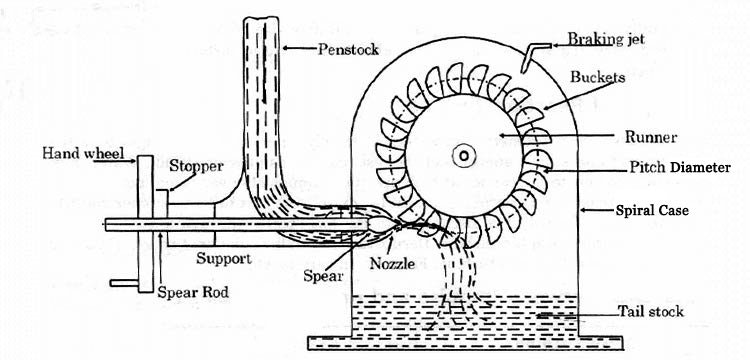How Does Hydro Work?
Hydropower plants capture the energy of falling water to generate electricity. A turbine converts the available energy from falling water into mechanical energy. Then a generator converts the mechanical energy from the turbine into electrical energy, which is supplied to the electrical grid.
Falling water is the power source that is used to turn a metal propeller-like piece called a turbine (Pelton Wheel in Utica’s case), which then turns a metal shaft in an electric generator, which produces electricity.
Take a look at the diagram below of a hydroelctric power plant to see the details:

In most cases, a dam is built on a river that has a large drop in elevation (there are not many hydroelectric plants in Kansas or Florida). In Utica’s case, the snowpack stores a huge amount of water during the winter and spring, which melts and runs off into reservoirs in the high country (Alpine, Utica, Union and New Spicer) along the Highway 4 Corridor, which store water and release water throughout the year. A reservoir on the North Fork Stanislaus called McKay’s Point Reservoir diverts water into an 18-foot-diameter tunnel, which runs from Arnold to Camp Nine, where the water is used to make power by the Northern California Power Agency.
In Avery, Utica has a pipe that taps that tunnel and it receives water via gravity that it runs through a 27-mile-long conveyance system. On its way down the hill, it is stored in several reservoirs before passing through two penstocks and two powerhouses in series – one in Murphys and the second in Angels Camp.
2.31 feet of head = 1 PSI.
A pipe that connects a water source from a high elevation to a powerhouse at a lower elevation.
No. There are screens at the top of the penstock, which prevent fish from entering the pipe.
Gravity causes the water to fall through the penstock (large pipe). The farther the water falls, the higher the pressure inside the pipe (head pressure), and the more energy can be produced.

At the end of the penstock there is a turbine propellor (Pelton Wheel) which the high-pressure water turns. The Pelton Wheel is connected to a large, metal shaft that goes up (or over) into the generator, which produces the electrical energy. The generator is connected to a substation and electricity is provided to homes and businesses. The water’s potential energy is used when spinning the Pelton Wheel, and then it continues past the Pelton Wheel where it exits into an afterbay (small pond). Learn about the history of the Pelton Water Wheel Co. and how many were installed in Calaveras County by reading this eBook.

A path which allows for water to exit a powerhouse after being used to turn a turbine.
Once the water leaves the powerhouse, it flows back into a stream or river, where it builds energy as it continues to fall down the canyon. Further downstream, that water can enter another penstock and be used to make power again.


